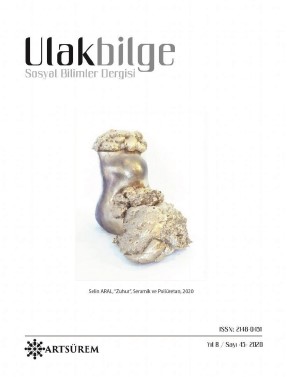TÜRK KÜLTÜR VE SANATINDA GEYİK SEMBOLİZMİ
THE SYMBOLISM OF DEER IN TURKISH CULTURE AND ART
Author(s): Şenay SAYIN ALSAN, Sinem AkinSubject(s): Cultural history, Visual Arts, History of Art
Published by: Sanat ve Dil Araştırmaları Enstitüsü
Keywords: deer; mythology; sacrifice; Shamanism; totem;
Summary/Abstract: Turks have played an active role over a vast geography throughout history. Throughout the centuries, they have acquired a tremendous cultural richness by exchanging culture with many nations. Animal symbolism has an important place in this richness. From the Proto-Turkic societies to the present day, the deer has been one of the most frequently used mythological elements by the Turks and the surrounding tribes. As in the Ying-Yang contrast in Chinese culture, the concept of Earth and Sky is an important part of mythology among Turks. The deer, serving both the earth and the sky god, is a crucial figure for both sides. It was also considered divine and sacred. The deer symbol was often associated with the dynasty and especially with the rulers since it was known as a mythological element that often guided and helped well-qualified, compassionate, and good people. Although some of its features have changed after the transition to Islam, it has never lost its place and importance in Turkish culture. It is possible to see the deer figure frequently in almost every period of Turkish art. The deer has been one of the most frequently used symbols in the geography of Anatolia where Turks have settled, as it was in Central Asia.
Journal: Ulakbilge Sosyal Bilimler Dergisi
- Issue Year: 8/2020
- Issue No: 45
- Page Range: 215-226
- Page Count: 12
- Language: Turkish

